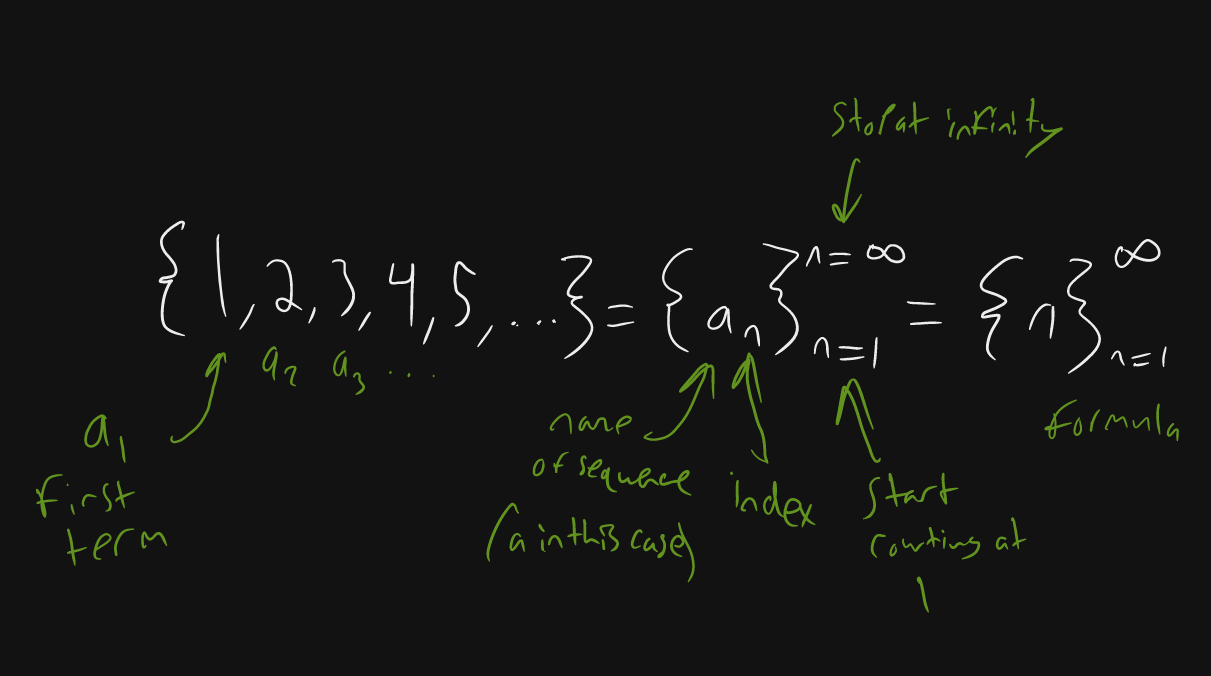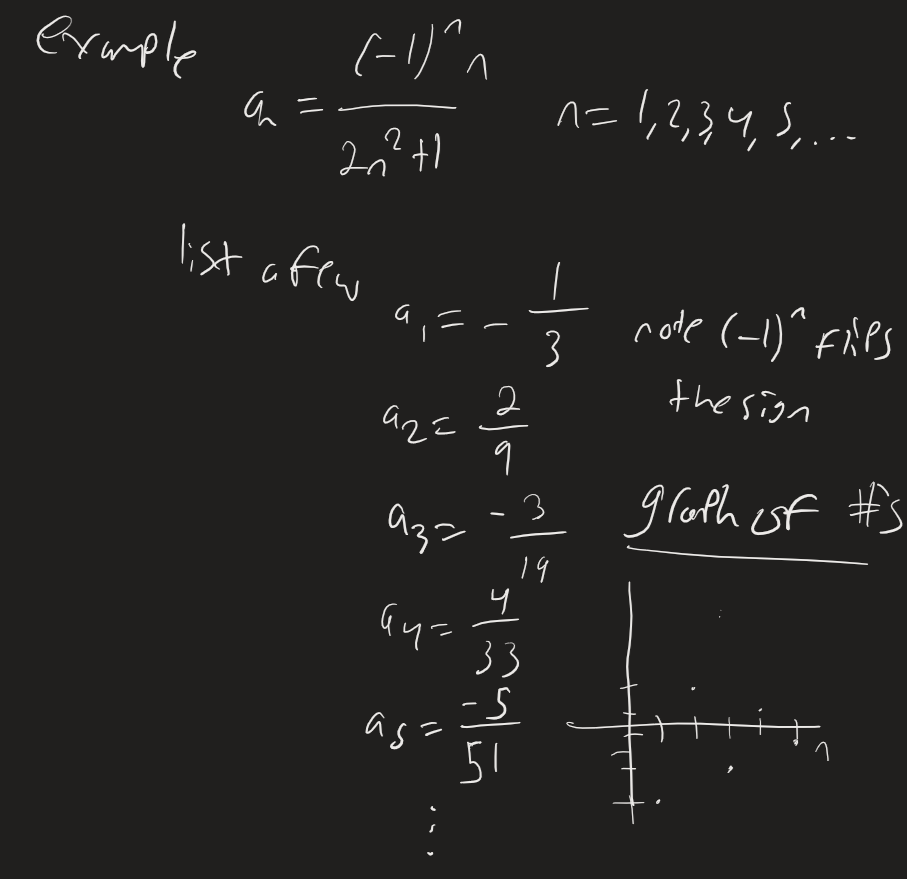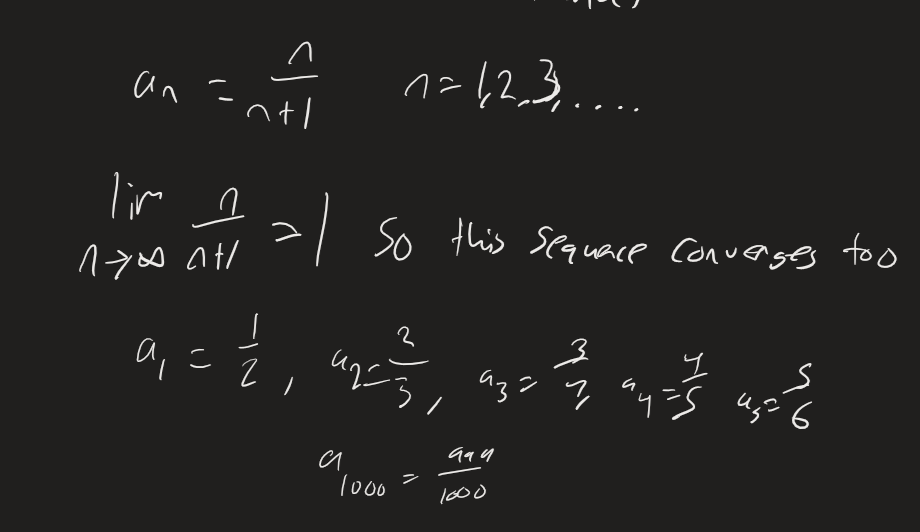#Calc-2#Math#Series Sequences Lecture Notes - Examples Here
A sequence is a list of of numbers in some particular order. For example or
We can list the numbers in a sequence like above or by:
Explicit Formula
A formula that can be used to generate each term in the sequence

Recurrence Relation
Another way of writing a formula to generate each term in a sequence. Written using to denote which index you are currently one. For example, can be written as, : the n+1th term is one more than the nth term.
Another example
The Fibonacci Sequence can also be written as a recurrence relation
Convergence
A sequence is said to converge (or is convergent) if exists. The limit is called the Limit of the Sequence.
If , then the sequence diverges (or is divergent).
 The graph and the list suggest that the numbers get closer to zero as n increases.
So the limit of this sequence is 0, and therefore the sequence converges.
The graph and the list suggest that the numbers get closer to zero as n increases.
So the limit of this sequence is 0, and therefore the sequence converges.
The limit can be any number.

Another example:
So the sequence gets closer and closer to 1.
Notice the numbers in that series increase from 1 to 3, but then decrease for everything greater than 3.
Compare this to where the terms are always increasing. => This sequence is monotonic, the terms move in one direciton only has the terms increasing for a bit then decreasing => It is not monotonic
Both of these sequences are bounded. In the terms get no smaller than and no biggre than 1 => It is bounded below by and above by 1 In the terms get no smaller than 1 and no bigger than => It is bounded below by 1 and above by
bounded implies an upper bound and lower bound exist
If a sequence is monotonic and bounded it converges.
Geometric Sequence
In the geometric series, there is a common ratio between all succeeding terms.
each term is the term before.
each term is the term before.
The maximum value for a sequence to converge is 1
The minimum is -1, but it doesn’t converge for -1.
For a geometric sequence to converge, or in interval notation (-1, 1]
Growth Rates of Sequences Theorem
If the denominator of a fraction within a sequence grows faster than the numerator of the sequence, then the sequence converges to 0.
